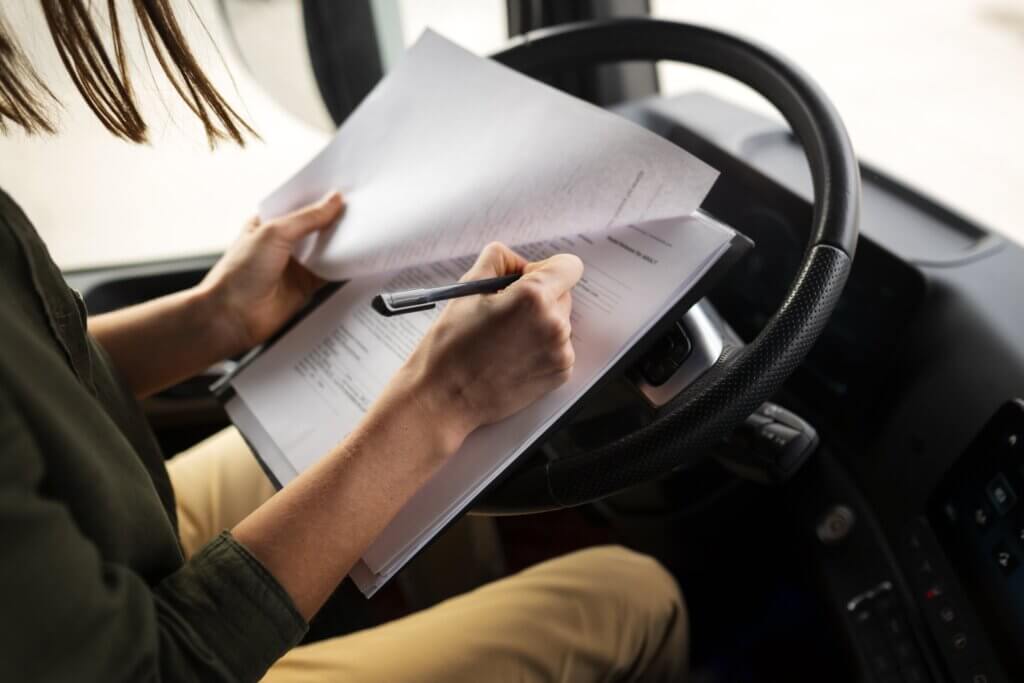
A bill of lading (B/L) is an important document in the world of shipping. It acts as a multi-purpose tool, serving as a receipt, contract, and even a negotiable instrument in some cases. Let’s delve into the details of BLs and understand their importance in the context of bill of lading tracking.
Bill of Lading Meaning:
A Bill of Lading (B/L) is a legal document issued by a carrier or its agent to acknowledge the receipt of goods for shipment. It serves as evidence of the contract of carriage between the shipper (sender of goods) and the carrier (transportation company), and as a receipt for the goods delivered to the carrier for shipment.
Example:
John provided a Bill of Lading to XYZ Shipping Company for shipping 10 boxes of electronics to Raju.
Bill of Lading Meaning in Tamil
பில் ஆஃப் லேடிங் (B/L) என்பது கேரியர் ஷிப்பிங்கிற்காக பொருட்களைப் பெற்றுள்ளார் என்பதை உறுதிப்படுத்தும் ஒரு சட்டப்பூர்வ ஆவணம் ஆகும். இது கப்பல் ஏற்றுமதி செய்பவர் (பொருட்களை அனுப்புபவர்) மற்றும் கேரியர் (போக்குவரத்து நிறுவனம்) இடையேயான போக்குவரத்து ஒப்பந்தத்தின் சான்றாகவும், ஏற்றுமதிக்காக கேரியருக்கு வழங்கப்பட்ட பொருட்களுக்கான ரசீதுகளாகவும் செயல்படுகிறது.
Example:
XYZ ஷிப்பிங் கம்பெனிக்கு 10 எலக்ட்ரானிக்ஸ் பெட்டிகளை ராஜுவுக்கு அனுப்பியதற்காக ஜான் பில் ஆஃப் லேடிங்கை வழங்கினார்.
Bill of Lading Meaning in Hindi
लदान का बिल (B/L) शिपमेंट के लिए माल की प्राप्ति को स्वीकार करने के लिए एक वाहक या उसके एजेंट द्वारा जारी किया गया एक कानूनी दस्तावेज है। यह शिपर (माल भेजने वाले) और वाहक (परिवहन कंपनी) के बीच गाड़ी के अनुबंध के साक्ष्य के रूप में और शिपमेंट के लिए वाहक को दिए गए माल की रसीद के रूप में कार्य करता है।
Example:
जॉन ने राजू को इलेक्ट्रॉनिक्स के 10 बक्सों की शिपिंग के लिए XYZ शिपिंग कंपनी को लेडिंग का बिल प्रदान किया।
Who Issues a Bill of Lading?
The carrier, or their authorized agent, issues a bill of lading upon receiving the goods for shipment. This confirms that they have taken possession of the shipment and acknowledges its condition and quantity.
Does a Bill of Lading Need to be Signed?
Yes, a Bill of Lading requires signatures for acknowledgment:
- The carrier or its authorized agent signs to confirm receiving the goods.
- The shipper may also sign, verifying the information provided is accurate.
Bill of Lading Tracking:
Many carriers offer bill of lading tracking services that allow shippers and consignees to monitor the real-time location and status of their shipment. This information is typically available on the carrier’s website or through a mobile app, using the unique BL number.
Important Note: Specific legal requirements and practices related to BLs may vary depending on jurisdiction and transportation mode (maritime, air, road, rail).
Types of Bills of Lading:
Straight Bill of Lading:
This type of B/L is non-negotiable and specifies that the goods are to be delivered only to the named consignee. It is commonly used when the shipment is prepaid or when the consignee is known and trusted.
Order Bill of Lading:
This type of B/L is negotiable, meaning it can be transferred or assigned to another party through endorsement. The goods can be delivered to the named consignee or to any party who presents the original B/L or a proper endorsement.
Bearer Bill of Lading:
This type of B/L is negotiable and can be transferred simply by physical possession of the document. It does not require any specific endorsement.
Switch Bill of Lading:
This B/L is used when there is a need to change the consignee or destination of the goods during transit. It allows transfer of goods to another party or location.
Clean Bill of Lading:
It is issued by the carrier when the goods are received in good condition and apparently complete. This is the preferred type of BOL as it signifies no issues with the shipment.
Claused Bill of Lading (Foul Bill of Lading):
It is issued by the carrier when the goods are received in damaged condition or there is a discrepancy in the quantity of goods, thereby protecting the carrier and documenting the shipment’s condition.
House Bill of Lading:
A BOL issued by the freight forwarder to a shipper as a receipt acknowledging they have received the goods for shipment.
Master Bill of Lading:
The main BOL issued by the carrier. It serves as a receipt for all cargo on a vessel from the freight forwarder and a contract of carriage with the consignee.
Charter Party Bill of Lading:
A special agreement used when a shipper charters an entire vessel for their exclusive use to transport a specific shipment.
Purpose of a Bill of Lading
Evidence of Contract:
The B/L acts as a legal document that outlines the terms and conditions of the contract of carriage between the shipper and the carrier. It serves as proof that an agreement exists.
Receipt of Goods:
The B/L serves as a receipt issued by the carrier, confirming that the goods have been received for shipment. It includes details such as the quantity, description, and condition of the goods at the time of receipt.
Title and Ownership:
A negotiable B/L can transfer the title and ownership of goods from the shipper to the consignee or other parties through proper endorsement. It enables the transfer of goods as a negotiable instrument.
Freight Documentation:
The B/L includes information about the freight charges, the agreed-upon delivery terms, and any special instructions or requirements for the shipment. It helps in managing and accounting for the transportation costs (To learn more about freight documentation, and get a better insight).
Cargo Insurance:
The B/L may serve as evidence of the insurable interest in the goods being transported. It can be used to support insurance claims in case of loss, damage, or other incidents during transit.
Customs Clearance:
The B/L provides crucial information required for customs clearance, such as the details of the shipper, consignee, and the nature of the goods. It facilitates the smooth movement of goods across international borders.
Please note that the specific legal requirements and practices related to Bills of Lading may vary in different jurisdictions and depending on the mode of transportation (e.g., maritime, air, road, rail.)
Example:
Imagine you are a farmer named John who grows delicious apples. You want to ship a large quantity of apples to a buyer named Sarah who owns a grocery store in another city. To ensure a smooth and secure transaction, you both agree to use a Bill of Lading.
John takes his apples to a shipping company and gives them the B/L. The shipping company then signs the B/L, acknowledging that they have received the apples from John. This document not only acts as a receipt for John, confirming that the shipping company has the apples, but it also outlines the terms of the agreement between John and the shipping company, including the destination and any special instructions.
When Sarah receives the apples, she will need to present the signed B/L to claim ownership of the apples and complete the transaction. The B/L is essential for both John and Sarah as it ensures that the apples are properly shipped, accounted for, and transferred from John to Sarah.
FAQs:
Can a straight Bill of Lading be transferred to another party?
No, a straight Bill of Lading is non-negotiable and specifies that the goods are to be delivered only to the named consignee.
What is the purpose of a switch Bill of Lading?
A switch Bill of Lading is used when there is a need to change the consignee or destination of the goods during transit.
Why is a Bill of Lading important for customs clearance?
A Bill of Lading provides crucial information required for customs clearance, such as the details of the shipper, consignee, and the nature of the goods.
